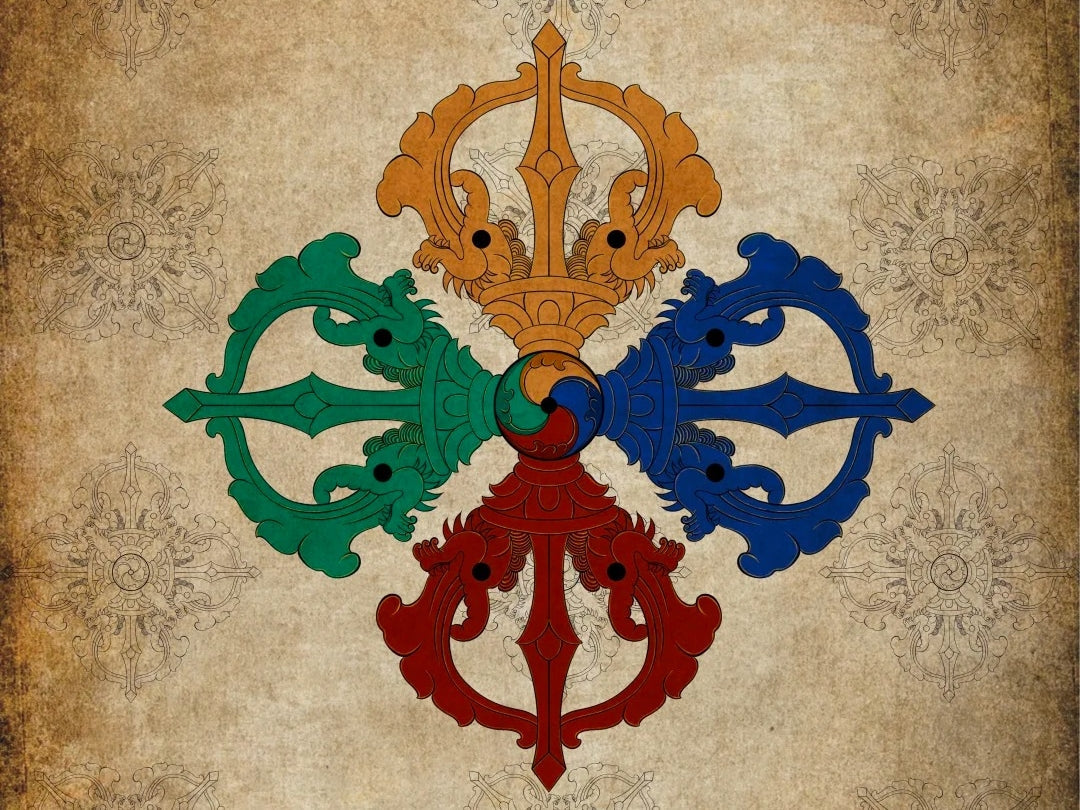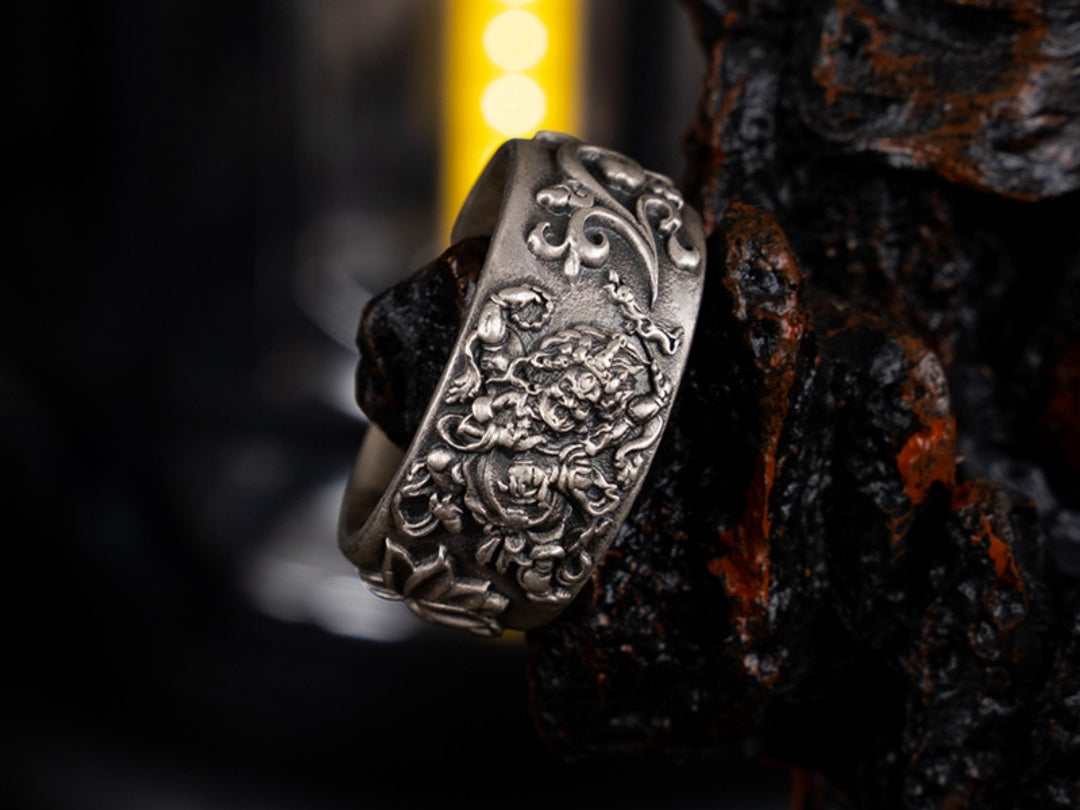A hand-painted Thangka pendant is far more than jewelry — it’s a sacred image carried close to the heart. Each one combines centuries of Buddhist artistry with modern craftsmanship, serving as both adornment and amulet.

If you’ve ever wondered how to commission your own custom Thangka jewelry, this guide will walk you through the process — from choosing your deity to final blessing.

1. Begin with Intention
Before sending any request, take a quiet moment to reflect on what you hope your pendant will embody. Do you seek guidance for your spiritual path? Protection for travel? Support in healing or focus?
Different Thangka deities represent different blessings:
-
Medicine Buddha — healing, clarity, and balance
-
Yamantaka — protection and overcoming obstacles
-
Palden Lhamo (Zachik Lhamo) — courage and strong guardianship
- Yellow Jambhala: A deity of wealth, aiding in eliminating poverty.
- Green Tara: Known for swift action in relieving suffering.
- Zhaqi Lhamo(Zakiram扎基拉姆): A revered goddess in Tibetan Buddhism, symbolizing good fortune, protection, wealth, and happiness.
- Amitabha Buddha: Symbolizes infinite light, wisdom, and compassion.
- Acala (Fudo Myo-o): A protector deity, representing courage and determination.
- Vairocana: The source of all light and wisdom.
- Mahasthamaprapta: Illuminates with wisdom, aiding in breaking free from reincarnation.
- Samantabhadra: Inspires practitioners with great vows and endless virtue.
- Four-Armed Avalokiteshvara: Represents boundless compassion, providing swift assistance.
- Manjushri: Embodies wisdom, wielding a sword to cut through ignorance.
- Akasagarbha: Brings wisdom and prosperity, ideal for students and career growth.
- Yellow Jambhala: A deity of wealth, aiding in eliminating poverty.
- Fox Deity: Represents spiritual wisdom and protection, rooted in local beliefs.
Clarifying your purpose helps both you and the artisan align the pendant’s energy and iconography.
2. Contact QiLing Aura for a Consultation
Once you’re ready, send an email to emily@qilingaura.com or support@qilingaura.com with your ideas.
You can specify:
-
The deity or figure you’d like (e.g., Medicine Buddha, Green Tara, or Vajrapani)
-
The material and color of the Gawu Box setting (white copper, brass, or sterling silver)
-
Any symbolic details you hope to include — such as lotus motifs, protective mantras, or seed syllables
The more details you provide, the more closely the finished pendant will reflect your personal vision.
3. Reviewing Reference Images
After receiving your message, Emily from QiLing Aura will reply with reference photos or similar completed Thangka pendants. This helps you visualize options and confirm design preferences — ensuring every aspect feels right before the artisan begins painting.
This stage is also the time to ask questions about icon accuracy or Tibetan script spelling, both essential for respectful representation. QiLing Aura works only with trained Thangka artists who follow traditional proportions and sacred art guidelines.
4. Confirm and Secure Your Commission
Once you’ve chosen your design, Emily will create a secure custom payment link. After payment, the artist begins the process of hand-painting your pendant — a meditative practice requiring precision, focus, and prayer.
Each piece is drawn, layered with natural pigments, and set into your chosen metal. Because the pendant is entirely hand-painted, production time ranges from 5 to 15 business days, depending on the complexity of the artwork. Most commissions ship within 7 days.

5. Review Before Shipment
Before the pendant is shipped, you’ll receive photos and videos of the completed piece via email. This step ensures you’re completely satisfied before it leaves the studio. Only after your confirmation will the team package it carefully for shipment.
6. Respecting the Sacred Nature of Custom Work
Because every Thangka pendant is a one-of-a-kind sacred commission, QiLing Aura does not accept returns or exchanges. Beyond craftsmanship, this is also a matter of respect — once a deity has been invoked through the painting process, it should not be treated as a replaceable item.
7. Questions to Ask Your Artisan
To ensure you’re commissioning ethically and respectfully, here are some thoughtful questions you might include in your email:
-
Is the Thangka artist formally trained in traditional painting techniques?
-
What pigments or materials are used?
-
Will the piece receive a blessing or dedication before shipment?
-
How do you ensure iconographic accuracy and cultural integrity?
These questions show genuine care for both the spiritual and artistic process — values deeply shared by QiLing Aura’s artisans.

A Final Thought
To commission a Thangka pendant is to enter a small lineage — one where devotion, art, and ethics meet. Each pendant bridges worlds: the spiritual vision of the painter, the material beauty of the metalsmith, and the heartfelt intention of the wearer.
Handled with respect, it becomes not just jewelry, but a lifelong companion on your path.



